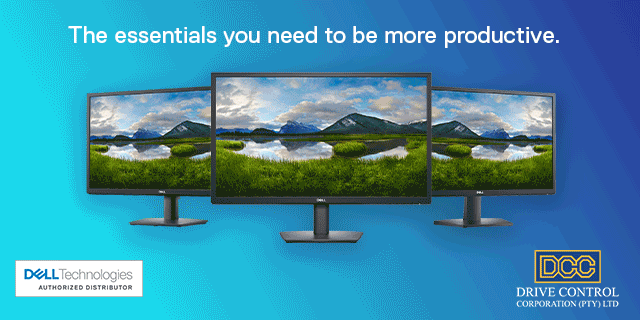NEWS SPONSORED BY DELL E-SERIES 24" MONITORS FROM DCC:
By Andrew Cruise, MD of VMware Cloud provider Routed
If your business, like many others, is faced with the decision of running your own infrastructure or migrating to the cloud, you’ve likely already done your homework. You know that although the benefits cloud offers are numerous, such as increased agility and efficiency, longer-term hardware efficacy and greater security, it comes at a cost.
And, at first glance, managing your own infrastructure might seem less expensive. But it comes with hidden costs few people are aware of. Businesses usually do this cost analysis when they’re about to replace their hardware during a refresh cycle, and considering cloud versus on-premise infrastructure. The argument in favour of on-premise infrastructure is always that it’s a once-off expense, plus monthly power expenses and a salary for an engineer, but that’s it. Cloud adds up over time and amounts to a larger number. And if that’s all that’s considered, on-premise often comes out on top.
But there are several additional costs to on-premise that should be factored in. These costs mostly have to do with risk. Businesses tend not to take risks into account in their calculations because it’s so difficult to quantify.
Besides the obvious risks of having backup and recovery systems for when the power goes out, be sure to also consider these hidden costs when doing an analysis:
1. Expertise
We always tell businesses running their own infrastructure that they need at least two competent engineers to manage it, at a cost of between R50,000 to even R100,000 per month. One might seem enough, but what happens when that one person is not available? What if they’re hospitalised or resign and you can’t replace them (immediately or even at all) because of the global skills shortage in this field? You might even have another staff member who knows just enough to do the basics, but if something disastrous happens, will your business survive that extended downtime? Due to their focus and scale, specialist cloud providers can attract and retain the best talent, to ensure their cloud infrastructure is well architected and maintained.
2. Sufficient spec
SMEs are especially prone to ‘under-speccing’ their infrastructure due to budget constraints. A proper enterprise solution not only means having sufficient storage, power, and processing but having that well into the future as the business evolves. Then there’s disaster recovery that needs to be considered and should ideally be a second site with matching infrastructure. Because such sites can sit idle for years until an emergency, businesses tick the disaster recovery box by keeping old hardware around for this purpose. And then, should it become needed, this hardware can’t do the job. Not being able to provision a sufficiently enterprise-grade environment on your own is a business risk.
3. Warranties and licensing
Software and hardware warranties and software licencing or subscriptions also need to be considered. Better cloud providers make sure everything is kept under warranty, while businesses often let warranties lapse. You might have the expertise to fix some problems in-house, but what happens when you need the manufacturer’s support or need to replace faulty hardware? Extended warranties are an important, often necessary, expense.
4. Ageing hardware
Because the cloud versus on-premise decision is usually made during a refresh cycle, decision makers can be blinded by the brand new hardware they’re considering. But this amazing hardware will only be great for a while. In two or three years the hardware will start slowing down and there’s a cost to running slow hardware. Older technology draws more power and takes up more space – not to mention the performance sacrifice. And, of course, as items age they become more prone to failure. This “ageing” problem also exists in the hyperscalers like AWS and Azure – when one reserves compute instances for 1-3 years (at a discounted rate, usually paid for up front), one is stuck on that old hardware for that period. Good Cloud providers alleviate the cost versus performance issue because these providers are constantly upgrading their equipment. This also means you’ll always have the latest technology available, promoting efficiency and encouraging innovation.
Cloud is, in a way, like an insurance payment, it mitigates all these risks by providing the expertise, volume and scale that allows you to achieve levels of availability and redundancy you can’t achieve on-premise. And, if you use a specialist local provider, you’ll always have access to telephone support and the best expertise, ensuring that any problems are quickly solved.






